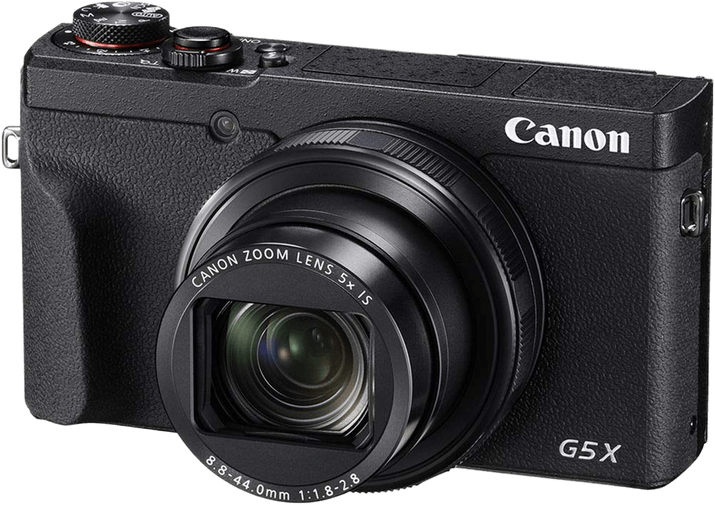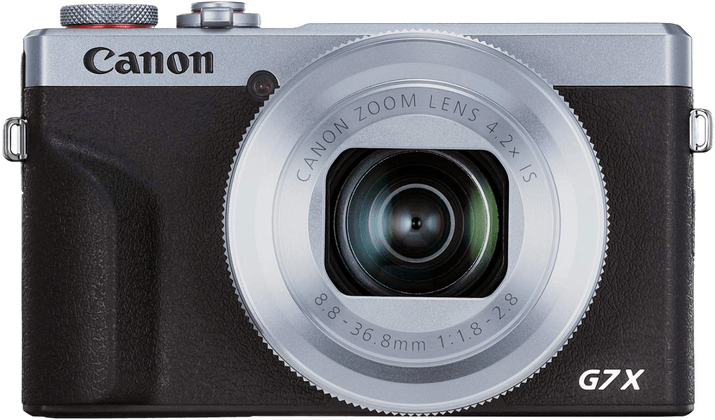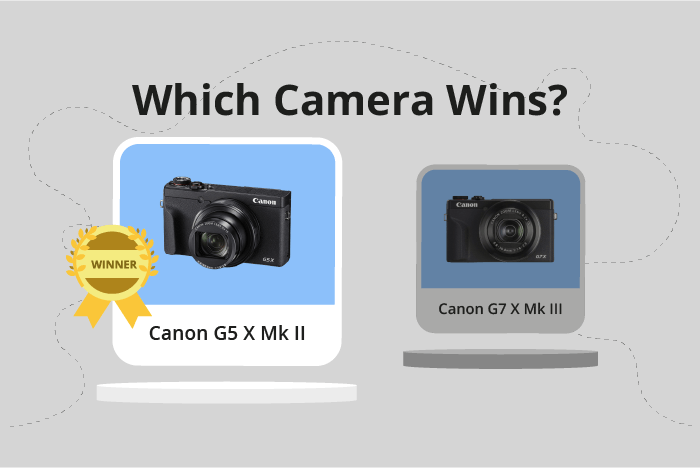Canon PowerShot G5 X Mark II vs PowerShot G7 X Mark III Comparison
Canon PowerShot G5 X Mark II

Canon PowerShot G7 X Mark III

The Canon PowerShot G5 X Mark II and the Canon PowerShot G7 X Mark III both have a score of 59/100, indicating that they are fairly evenly matched in terms of general specifications. Both cameras are compact and were announced on the same day, July 9, 2019. They share similarities in size, with the G5 X Mark II measuring 111 x 61 x 46mm and the G7 X Mark III at 105 x 61 x 41mm.
The G5 X Mark II has a higher launch price of $900 compared to the G7 X Mark III’s $749, but it also weighs more at 340g compared to the G7 X Mark III’s lighter 304g. While both cameras offer similar performance, the G5 X Mark II may be more suitable for those who prefer a slightly larger and sturdier build. On the other hand, the G7 X Mark III is more budget-friendly and lighter, making it a better option for those who prioritize portability and affordability. Ultimately, the choice between these two cameras comes down to personal preference and specific needs.
Canon PowerShot G5 X Mark II vs PowerShot G7 X Mark III Overview and Optics
The Canon PowerShot G5 X Mark II slightly outperforms the Canon PowerShot G7 X Mark III in optics, with a score of 58/100 compared to 57/100. Both cameras share several key specifications, including 20 megapixels, 30 shooting speed, CMOS sensor type, Digic 8 processor, 58 DXOMARK score for the sensor, 1″ sensor size, fixed lens mount, and image stabilisation.
The G5 X Mark II’s advantage comes from its slightly better optics score. This means that the G5 X Mark II has marginally superior image quality and performance in various shooting conditions. This could make a difference for photographers who prioritize image quality and want the best possible results from their camera.
On the other hand, the G7 X Mark III’s optics are not far behind, with only a one-point difference in the score. This indicates that the G7 X Mark III still delivers excellent image quality and performance, making it a strong contender for those looking for a high-quality camera. Its lower score does not necessarily mean it is an inferior camera; it simply means that the G5 X Mark II has a slight edge in the optics department.
In comparing the Canon PowerShot G5 X Mark II and the Canon PowerShot G7 X Mark III, it is evident that both cameras offer high-quality optics and impressive performance. The G5 X Mark II has a slight advantage in terms of optics, making it a better choice for photographers who prioritize image quality. However, the G7 X Mark III remains a strong option for those who want a high-performance camera with excellent image quality. Ultimately, the choice between these two cameras comes down to individual preferences and priorities.
Canon PowerShot G5 X Mark II vs PowerShot G7 X Mark III Video Performance
The Canon PowerShot G5 X Mark II and the Canon PowerShot G7 X Mark III both have a video score of 91/100, indicating that they are equally capable in terms of video performance. These cameras share several key specifications, including a maximum video resolution of 4K, maximum video dimensions of 3840 x 2160, a maximum video frame rate of 120fps, and built-in time-lapse functionality.
Despite having the same score, there are certain aspects in which one camera may outperform the other. The G5 X Mark II is better than the G7 X Mark III in some areas; however, these advantages are not reflected in the video score. It is important to consider other factors beyond the score, such as ease of use, additional features, and individual user preferences.
Similarly, the G7 X Mark III may excel in certain areas not captured by the video score. Users may find that this camera is more suitable for their needs based on factors unrelated to video performance. These factors can include ergonomics, battery life, and additional functionalities that are not covered by the video score.
Both the Canon PowerShot G5 X Mark II and the Canon PowerShot G7 X Mark III are strong contenders in the realm of video performance. With identical video scores and shared specifications, they are evenly matched in this regard. The choice between these cameras should be based on other factors that are important to the individual user, as their video capabilities are essentially equivalent.
Canon PowerShot G5 X Mark II vs PowerShot G7 X Mark III Features and Benefits
The Canon PowerShot G5 X Mark II and the Canon PowerShot G7 X Mark III both have a feature score of 70/100. This score reveals that these cameras have similar capabilities in terms of features.
Both cameras share a 3-inch screen size and a screen resolution of 1,040,000 dots. They also both have touchscreen functionality and flip screens, making them user-friendly and versatile for various shooting situations. Neither camera has GPS, but they both have WIFI and Bluetooth connectivity, which allows for easy sharing and transfer of photos and videos.
Despite having the same feature score, the G5 X Mark II is better in some aspects. However, no specific advantages for the G5 X Mark II over the G7 X Mark III are provided.
On the other hand, the G7 X Mark III also does not have any specific advantages over the G5 X Mark II, as their features are identical.
Considering their identical feature scores and specifications, both the Canon PowerShot G5 X Mark II and the Canon PowerShot G7 X Mark III are equally capable cameras. The choice between these cameras will depend on other factors, such as price, design, and personal preferences.
Canon PowerShot G5 X Mark II vs PowerShot G7 X Mark III Storage and Battery
The Canon PowerShot G5 X Mark II and Canon PowerShot G7 X Mark III both score 27/100 for storage and battery. They have identical storage specifications, with one memory card slot each and compatibility with SD, SDHC, and SDXC (UHS-I compatible) memory cards. Both cameras also feature USB charging and use the same battery type, NB-13L.
The G7 X Mark III has a slight advantage in battery life, offering 235 shots compared to the G5 X Mark II’s 230 shots. This difference, however, is minimal and may not significantly impact users’ experiences.
There are no notable areas where the G5 X Mark II outperforms the G7 X Mark III in terms of storage and battery. With identical scores and nearly identical specifications, both cameras offer similar performance in this category.
Canon PowerShot G5 X Mark II vs PowerShot G7 X Mark III – Our Verdict
Are you still undecided about which camera is right for you? Have a look at these popular comparisons that feature the Canon PowerShot G5 X Mark II or the Canon PowerShot G7 X Mark III:
- Canon PowerShot G7 X Mark III vs Sony Cyber-shot DSC-RX100 VII
- Canon PowerShot G7 X Mark II vs PowerShot G7 X Mark III
- Canon PowerShot G5 X Mark II vs Sony Cyber-shot DSC-RX100 VII
- Canon PowerShot G7 X Mark III vs Panasonic Lumix ZS200 (TZ200)
- Canon PowerShot G7 X Mark III vs Ricoh GR IIIx
- Canon PowerShot G7 X Mark III vs Sony ZV-E10

